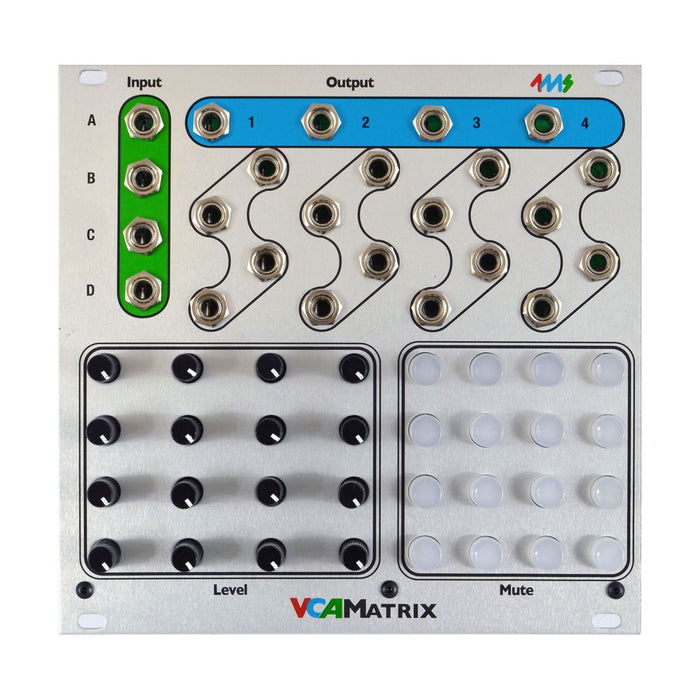VCA Matrix (VCAM) is a mixer module that can mix both audio signals and control signals with 4 IN 4 OUT. You can freely mix and branch signals from each input to each output using the corresponding gain knobs. And in VCAM, from input to outputEquipped with VCA on all 4 × 4 routesHowever, it is possible to control the amount of signal to be routed with CV. By using the VCA and mixer functions together, you can mix, branch, and modulate many signals at once. By returning the branched signal to the input,feedbackIt can also be used for etc. In addition, since it is equipped with a mute button, it is also possible to control trigger signals and audio signals in real time very intuitively, so it also functions as the central control interface for the entire modular unit.
At first, when you start using it as a simple 4x4 mixer as an audio or CV mixer, you will naturally control the VCA of those routings with CV or feed it back, so it is very intuitive and modular. It is possible to create original sounds while performing unique parallel processing.
For example, to send the same LFO to multiple CV inputs, you can easily send an LFO signal from one input to four outputs, and control the amount of each signal with CV.
また
pressure pointsIt is also interesting to send the Pressure Out etc. of to the CV in of VCAM and change the mix amount with the force to press the Pressure Points.
Feedback mixer When mixing CVs using several VCMA channels, you can feed the outputs to different CV inputs on the same VCAM, and the output through them goes to another CV input ... It is also possible to create very dynamic and ever-changing movements by doing. However, if you do this too much, it will soon become too chaotic CV, and conversely CV tends to stick to a constant value, so it is a good point to give feedback while appropriately controlling feedback with attenuator or mute May be found.
In addition, the built-in 16 VCA CV inputs work at audio rates, of course, so you can also use audio for both the signal input and CV, and multiply the modulation to achieve huge cross modulation (AM).





